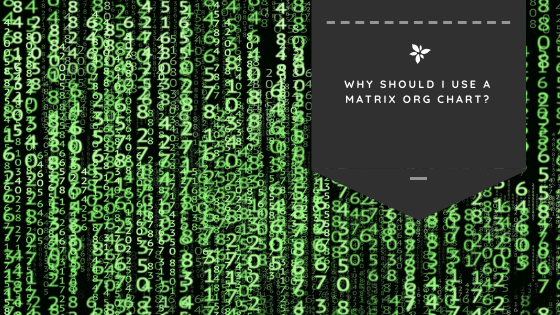Project managers have a lot on their plates. They must juggle a variety of responsibilities, programs, processes, and people. With so many elements and variables all having their own impact on the trajectories of each project they manage, it can be very difficult for them, and others working on projects, to understand how these elements and variables influence outcomes.
This is where the matrix org chart comes in.
What is a Matrix Org Chart?
You may be familiar with the traditional hierarchical org chart model. And while this has its place in organizations, others are better served by the matrix org chart model.
A matrix chart is a project management tool that is used to analyze and understand the relationships between different people. While matrix charts can be applied to other areas such as data, equipment, and materials, they are widely used for charting employees within an organization, their roles and responsibilities, and where they fall in its structure.
To put it simply, a matrix chart illustrates relationships between two or more variables. In the case of an organization’s teams, they are used to illustrate reporting structures where teams and the employees within them have two or more managers.
For example, a graphics design team may report to both the head of graphics design and the head of a project involving their department. At the same time, the marketing team may report to their own head of marketing and to the project leader.
Naturally, matrix org charts are commonly used in organizations where employees are divided into teams and operate using cross-functional groups rather than a linear reporting structure.
Advantages and Disadvantages of the Matrix Structure
The matrix organizational structure and org chart is not a one-size-fits-all solution. As with most things, you need to understand the advantages and disadvantages before making a decision on whether it is right for your organization.
Matrix Org Chart Advantages
The biggest advantage by far is the way a matrix chart allows the sharing of skilled resources between different departments and teams. This is achieved through open communication which allows knowledge to flow more freely. Also, the fostering of better communication that is achieved by the matrix structure breaks down barriers between teams and makes for a more dynamic working environment.
For employees who are looking to widen their skills and experience, the matrix org structure is a blessing because they can play a role in many different aspects of various projects. They become part of an environment where they have the opportunity to learn more skills and grow professionally.
Matrix Org Chart Disadvantages
There are two sides to every coin, however, and the matrix structure is no exception.
Where team members are subject to two or more managers, as they are in a matrix organization, there can be unnecessary conflict and confusion that arises. This is particularly true if two managers have equal authority and one cannot “overrule” the other, so to speak.
When there is a functional manager and a project manager, for example, conflict can be sparked by almost anything, especially when actual and/or perceived authority is thrown in the mix. This can cause problems on a team level too, especially where roles and responsibilities are not clearly defined or understood or where managers are competing for finite resources.
Aside from problems relating to managers, employees may feel more strained when working in a matrix structure. This is because workloads tend to be heavier as employees not only deal with their own work but also with additional work that forms part of a project’s inherently wider scope.
These disadvantages can be overcome, however. And not every organization will have them. They are entirely circumstantial.
Why Use the Matrix Structure?
Matrix org charts are effective when complex many-to-many relationships need to be visualized. They help project managers identify how different elements interact with and depend on each other, and they help employees work more efficiently and know who they are reporting to.
By putting teams and other groups of elements into a matrix org chart with its various rows and columns, project managers can easily visualize the relationships between teams, objectives, and other influential factors.
When project managers are able to do this, they use resources more efficiently, projects become more coordinated, information flows through the organization more freely, and employees are able to communicate with one another more easily, promoting the sharing of information and knowledge which can speed up project development and decision making.

